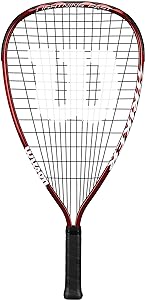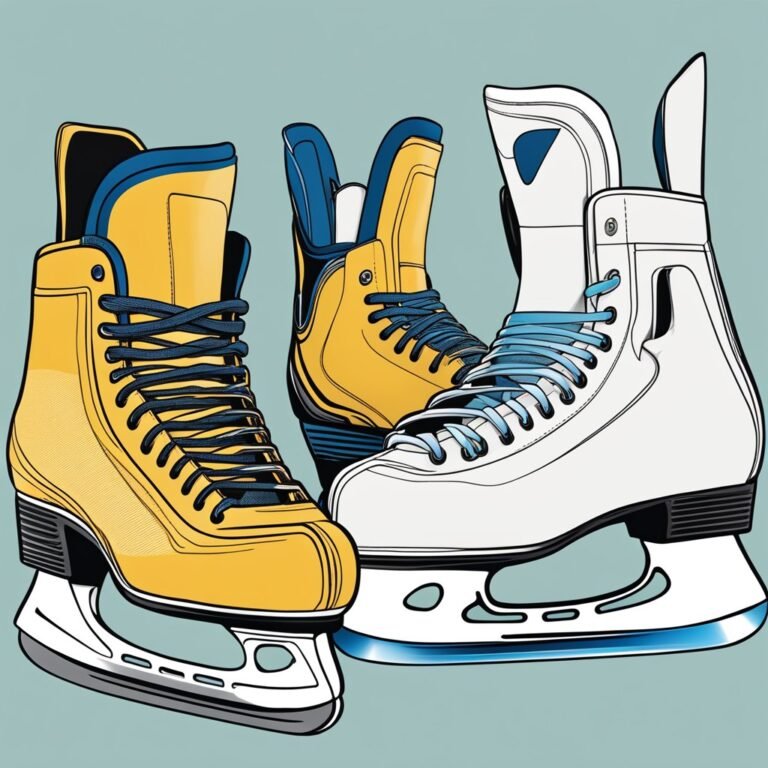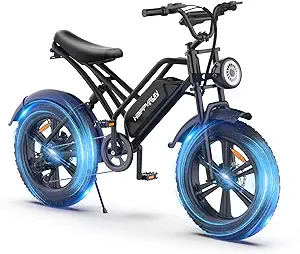Choosing the Right Racquetball Racquet for Your Playing Style
Importance of selecting the correct racquet
Choosing the right racquetball racquet is crucial for enhancing your game and maximizing your performance on the court. The racquet you use can greatly impact your swing, control, power, and overall gameplay experience. Using the best racquetball racquet for your playing style can help you improve your skills, prevent injuries, and achieve better results.
Factors to consider when choosing a racquet
When selecting a racquetball racquet, there are several important factors to consider. First, you need to determine your playing style and skill level. Beginners may benefit from a lightweight racquet with a larger sweet spot for easier maneuverability and forgiveness. Advanced players, on the other hand, may prefer a heavier racquet for more power and control.
Next, consider the weight and balance of the racquet. A head-heavy racquet provides more power, while a head-light racquet offers better maneuverability. The grip size should also be taken into account, as a comfortable grip ensures better control and reduces the risk of hand fatigue.
Lastly, consider the construction and materials of the racquet. Look for a racquet with a durable frame, such as those made from graphite or composite materials, to ensure longevity and resistance to wear and tear.
Finding the Best Racquetball Racquet: Racquet Weight and Balance

Understanding the impact of racquet weight on gameplay
When choosing a racquetball racquet, one important factor to consider is the weight of the racquet. The weight of the racquet can greatly impact your gameplay, and it’s essential to choose a racquet that suits your playing style.
A lighter racquet, such as the Wilson Striker Racquetball Racquet (ASIN: B00N4FOZKY), offers increased maneuverability and allows for quick swings. This makes it a great choice for beginners or players who prefer a faster-paced game. The lightweight design of the Wilson Striker Racquet enables players to react quickly to the fast-paced nature of racquetball.
On the other hand, a heavier racquet, like the HEAD MX Fire 190 Beginners Racquetball Racket (ASIN: B087DW174P), provides increased stability and control. The added weight helps absorb more impact, generating more power in your shots. This makes it ideal for players who rely on strength and power in their gameplay.
Ultimately, the weight of the racquet comes down to personal preference and playing style. It’s important to try out different racquets to find the one that feels comfortable and suits your gameplay style best.
Exploring different racquet balance options
In addition to weight, the balance of a racquetball racquet also plays a significant role in gameplay. Racquet balance refers to the distribution of weight along the racquet’s frame and affects how the racquet feels during play.
For players seeking better maneuverability and quick shots, a head-light balanced racquet, like the Python Intro 5000 Racquet (ASIN: B06XQ486YS), is a suitable choice. The head-light balance allows for faster swings, making it easier to react quickly to fast-paced shots.
On the other hand, a racquet with a head-heavy balance, such as the HEAD MX Fire 190 Beginners Racquetball Racket (ASIN: B087DW174P), offers more stability and power. The additional weight in the head of the racquet provides more momentum and generates more power in your shots.
Determining the ideal balance for your gameplay style depends on personal preference and playing technique. Some players may prefer the maneuverability of a head-light balanced racquet, while others may prioritize the stability and power of a head-heavy balance.
String Tension and Material
How string tension affects performance
The string tension of a racquetball racquet plays a crucial role in its overall performance. A higher string tension provides more control and accuracy, allowing players to execute precise shots with ease. On the other hand, a lower string tension offers more power and a larger sweet spot, making it ideal for players who rely on their strength and want to maximize their shot power. It’s important to find the right string tension that suits your playing style and preferences. Experimenting with different tensions can help you determine the one that provides the best balance between control and power, enhancing your overall performance on the court.
Different types of string materials and their benefits
When choosing a racquetball racquet, it’s essential to consider the type of string material used. Different string materials offer varying levels of durability, power, control, and feel. Synthetic strings, such as nylon, are popular among beginners and recreational players due to their affordability and durability. They provide a good balance of power and control. On the other hand, multifilament strings offer enhanced feel and comfort, making them a great choice for players who prioritize touch and control. Natural gut strings, although expensive, provide excellent feel and power, making them the preferred choice of professional players. It’s important to select a string material that aligns with your playing style and budget.
Grip Size and Material – Choosing the Best Racquetball Racquet

The significance of choosing the right grip size
When it comes to racquetball, choosing the right grip size for your racquet is crucial. The grip size directly affects your comfort and control on the court. If the grip is too small, it can cause hand fatigue and reduce your ability to maintain a firm hold on the racquet, resulting in a loss of control and accuracy in your shots. On the other hand, a grip that is too large can restrict your wrist movement and make it difficult to maneuver the racquet quickly.
To determine the correct grip size, consider the size of your hand and personal preferences. A smaller grip size is suitable for players with smaller hands, while larger grip sizes are better for those with bigger hands. It is essential to try out different grip sizes to find the one that feels most comfortable and allows for optimal control during gameplay. Remember, a proper grip size can significantly enhance your performance on the racquetball court.
Exploring different grip materials and their advantages
The choice of grip material is another vital aspect to consider when selecting a racquetball racquet. Different grip materials offer varying levels of tackiness, absorbency, and durability. The most common grip materials include leather, synthetic, and rubber.
Leather grips are favored by many professional players due to their excellent feel and absorption of sweat. They provide a firm and comfortable grip, ensuring minimal slippage during intense gameplay. However, leather grips may require more maintenance and can wear out faster compared to other materials.
Synthetic grips are a popular choice among recreational players for their durability and affordability. They offer good sweat absorption and provide a cushioned feel, enhancing comfort during prolonged matches. Synthetic grips are also easier to maintain, making them a practical option for players who play regularly.
Rubber grips are known for their superior tackiness, offering an enhanced grip even in sweaty conditions. They are highly durable and provide excellent shock absorption, reducing the risk of hand and wrist injuries. Rubber grips are especially beneficial for players with sweaty hands or those who prefer a secure and non-slip grip.
Choosing the right grip material ultimately depends on personal preference and playing style. It is advisable to try out different grip materials to determine which one suits your needs best and enhances your overall racquetball experience.
Head Shape and Size
Understanding the impact of head shape on gameplay
When it comes to choosing the best racquetball racquet, one crucial factor to consider is the head shape. The head shape of a racquet can greatly influence your gameplay and overall performance on the court. There are two primary head shapes to choose from: teardrop and quadraform.
The teardrop-shaped head is characterized by a narrower top and a wider bottom. This design provides a larger sweet spot and enhanced power, making it ideal for players who rely on aggressive shots and strong hits. On the other hand, the quadraform head has a more even distribution of weight along the entire frame, offering improved control and maneuverability. This head shape is preferred by players who focus on precision and finesse shots.
The choice between these head shapes depends on your playing style and personal preference. If you are an aggressive player who enjoys powerful shots and smashing the ball, a racquet with a teardrop-shaped head might be the best option for you. However, if you prioritize control and accuracy in your game, a racquet with a quadraform head could be more suitable.
Examining different head sizes and their effects on playstyle
In addition to head shape, head size is another key consideration when selecting the best racquetball racquet. The head size refers to the surface area of the racquet head, typically measured in square inches. The two main head sizes available are smaller (95-100 square inches) and larger (100-110 square inches).
A smaller head size provides a higher degree of control and maneuverability. It allows players to make quick shots and easily change the direction of the ball. This type of racquet is favored by experienced players who rely on their skill and precision to dominate the game. On the other hand, a larger head size offers a larger sweet spot, making it easier to generate power and hit the ball with more force. This can be beneficial for beginners or players who prefer a more forgiving racquet.
Consider your playing style and skill level when deciding on the head size. If you are a seasoned player with excellent control, a racquet with a smaller head size may be the best choice for you. However, if you are a beginner or looking for a racquet that helps generate more power, a larger head size could be more suitable.
By understanding the impact of head shape and head size on gameplay, you can make an informed decision when selecting the best racquetball racquet for your playing style. Remember, finding the right combination of these factors is crucial to enhancing your performance and enjoyment on the court.
Conclusion – The Best Racquetball Racquet for Competitive Play

Recap of the main points discussed
Choosing the best racquetball racquet is crucial for maximizing your performance on the court. In this article, we have explored various factors to consider when selecting a racquet that suits your playing style.
Firstly, it is essential to determine your skill level and playing style. Beginners may benefit from a racquet with a larger head size, as it offers a larger sweet spot and more forgiveness on off-center shots. Intermediate and advanced players, on the other hand, may prefer a smaller head size for increased precision and control.
Secondly, weight distribution plays a significant role in racquet selection. Head-heavy racquets provide more power, making them suitable for players who rely on aggressive shots. Conversely, head-light racquets offer enhanced maneuverability, enabling players to react quickly and make precise shots.
Lastly, grip size is often overlooked but can greatly impact your performance and prevent injuries. Choosing the right grip size ensures comfort and control, allowing you to maintain a firm hold on the racquet throughout intense gameplay.
Final tips for selecting the perfect racquet for your playing style
To further assist you in finding the best racquetball racquet, here are a few additional tips. Firstly, consider the string tension. Higher string tension provides more control, while lower tension offers greater power. Experimenting with different tensions can help you determine your preference.
Another crucial aspect is the material and construction of the racquet. Graphite racquets are lightweight and offer excellent power and control, making them popular among players of all skill levels. Titanium and aluminum racquets are more affordable but may lack the same performance characteristics.
Furthermore, don’t underestimate the importance of trying out different racquets before making your final decision. Many sporting goods stores offer demo programs or have racquets available for rental, allowing you to test them on the court and assess their feel and performance firsthand.
By considering your skill level, playing style, weight distribution, grip size, string tension, and racquet construction, you will be well on your way to finding the best racquetball racquet that complements your abilities and enhances your game.



